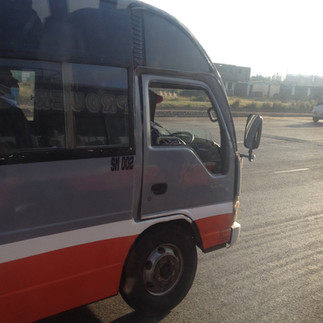
In this post we will look at :
1.)About JKUATES
2.)JKUATES vs JKUAT
2.)List of Short courses at JKUATES
3.)IT course at JKUATES
4.)JKUATES contacts
5.)List of seedlings sold at JKUATES
6.)JKUATES Probiotic yoghurt
7.)JKUATES seedlings guidelines
9.)10 Things to do around JKUATES

Image of JKUATES Entrance

JKUATES is Located inside JKUAT Juja Main Campus in Kiambu County and can be accessed easily through Gate E .

JKUATES is a state corporation operating as a limited company fully owned by Jomo Kenyatta university of agriculture and technology and houses four divisions namely EDC, Production, ICT and Consultancy

Image of a sweet Kisii banana seedling for sale at Jkuat
JKUATES Objectives is to enhance entrepreneurial activity through the latest innovations in technology research. JKUATES educational activities include training in Entrepreneurship ,ICT and production processes.

Image of GrandNain Banana seedling for sale
Majority of people tend to think that JKUAT seedlings are by JKUAT though all seedlings are sold by JKUATES it just happens JKUAT is prominent than JKUATES

Image of Banana seedling FHIA 17 for sale
And it may even appear one may study for 5 years at JKUAT and still never know about JKUATES therefore we are going to refer to JKUATES seedling as JKUAT seedlings

At JKUATES papaya fruit seedling production unit
JKUATES are well known in the following discipline:
Research & Development and proof of concept
Baseline surveys (Social,market,product, customer ,Organization surveys)
Enterprise Development Services
Technology Transfer
Business Process Outsourcing
Architectural and engineering design
Biotechnology products

Image of young Banana seedlings

At JKUAT Cherry park just opposite KCB Juja and next to Gate A
With JKUATES they do offer mainly educational training activities such as Entrepreneurship, ICT and production Processes. JKUATES courses take from 2 months to 6 months to complete
Image of JKUATES grounds
JKUAT offers from diplomas, degrees masters and PHD's .

Up Tech house /Hall 7 and ahead is Gashororo and JKUAT dam at gate D
while JKUAT shortest term is 2 years. JKUATES school fees is very affordable while for JKUAT we can attest to it that loans really take a part in completing the studies.

Ahead on Cherry Park to bridge to COPAS and COHES
While coming to do your exams at JKUATES you can pay the school fees with a deposit of At least half and pay the full amount before sitting for the exams

JKUAT KCB Entrance
while at JKUAT you can luckily sail through the semester without paying any fee until exams time when you will be required to be in the exam list .

At COPAS examination office waiting for our pass list or supplementary letters, maybe
Exams at JKUATES can be rescheduled while at JKUAT exams are fixed unless a special or supplementary which will require you to have a letter.

With Friends at JKUAT Cherry park
JKUAT offers short courses which comprise mainly ICDL,Programming,Graphics,Data science,Data Analytics we will list the courses offered in terms of field
ICDL
Course | Duration | Amount |
ICDL Workforce & Professional | 80 Hours | 27,000Ksh |
ICDL Digital marketing | 35 Hours | 12,000Ksh |
ICDL Advanced Excel | 35 Hours | 15,000Ksh |
Course | Duration | Amount |
Java Programming ,Java SE 8 | 35 Hours | 12,000Ksh |
Database Administration MYSQL | 35 Hours | 10,000Ksh |
Visual Basic VB .NET | 35 Hours | 16,000Ksh |
Python Programming 3.6.5 | 35 Hours | 18,000 Ksh |
Web Administration | 35 Hours | 10,000Ksh |
Architectural Planning & Design | 35Hours | 10,000Ksh |
Graphic Aided Design | 35 Hours | 7,000 Ksh |
Desktop Publishing (Corel Draw) | 35 Hours | 7,000 Ksh |
Adobe premier Pro | 35 Hours | 15,000Ksh |
Data Science with python | 80 Hours | 25,000Ksh |
Data Science with R | 80 Hours | 18,000Ksh |
Big Data & Hadoops | 80 Hours | 20,000Ksh |
Statistical Packages (SPSS,STATS0 | 40 Hours | 8,000Ksh |
Project Planning | 60 Hours | 18,000Ksh |
Project Management | 60 Hours | 15,000Ksh |
Monitoring and Evaluation | 35 Hours | 7,000Ksh |
Management Information System | 60 Hours | 15,000Ksh |
Cyber Security | 35 Hours | 10,000Ksh |
JKUATES offers Mushroom Training as well as production of Fresh and Dried Mushrooms ,Spawn, Substrate and casing soil. Mushroom training cost 10,000Ksh for Kenyan citizens and 30,000Ksh for non-citizens
Butoon | 600Ksh per Kilo |
Oyester | 600Ksh per Kilo |
Shitake | 1000Ksh per Kilo |
Casing soil | 6Ksh per Kilo |
Ganoderma | 1000Ksh per Kilo |
Oyester | 600Ksh per Liter |
Shiitake | 600Ksh per Liter |
Ganoderma | 1000Ksh per Liter |
Button SPAWN | 600Ksh per liter |
Agricus bisphorus | 600Ksh per Liter |
Bitorquise | 600Ksh per Liter |
JKUATES offers two ICT courses to enhance your computer proficiency mainly
Course | Duration | Amount |
Microsoft Office | 80 Hours | 4,500Ksh |
CompTIA A+ | 60Hours | 10,000Ksh |
Alfter graduating I decided to take a JKUATES course on Computer maintenance and I was advised to pick Comptia which is an ICT short course that equips you in skills

Image of JKUATES computer Laboratory
It is more so refereed to as CompTIA A+ which is taught by Charles. Basically with Computer components and computer systems ,computer system maintenance, operating systems like How to trouble shoot an operating system and disk partitioning, Application software and last unit is computer networks
To contact JKUAT Enterprises Ltd on phone you can reach them out on
Tel 2546752420
0724256696
0736524200
Facebook :DISCOVER JKUATES
Website : jkuates
P.O.Box 62000 Nairobi 00200
Jkuat Seedling Price List
JKUAT Mango Seedling
JKUAT Apple Mango | 150Ksh |
JKUAT Tommy Mango | 150Ksh |
JKUAT KENT Mango | 150Ksh |
JKUAT Ngoe Mango | 150Ksh |
JKUAT Tissue Culture Banana
Potted Seedlings | 130Ksh |
Plantlets | 100Ksh |
Green Bananas Per Kg | 10Ksh |

Image of a Giant Cavendish banana seedling for sale at JKUATES
JKUAT tree tomatoes seedlings
JKUAT Red Oratia | 60Ksh |
320Ksh |
JKUAT Winter Banana | 300Ksh |
JKUAT Red Delicious | 300Ksh |
Jkuat Passion Seedling
JKUAT Yellow Passion KPF4 | 60Ksh |
JKUAT Purple passion | 80Ksh |
JKUAT Sweet granadilla | 60Ksh |
JKUAT Tangerine | 150Ksh |
60Ksh |
250Ksh | |
150Ksh | |
150Ksh |
60Ksh |
Jkuat Lime seedling
150Ksh |
Jkuat Pawpaw seedling
Jkuat Grape Seedlings
JKUAT Grapes | 300Ksh |

Image of a jkuat hass avocado
JKUAT Hass avocado | 180Ksh |
JKUAT Fuerte avocado | 150Ksh |
JKUAT Black Soldier Worms | 2500Ksh per Kg |
JKUAT Organic Fertilizer | 50Ksh per Kg |
JKUAT Aloe Vera Seedlings | 60Ksh |
JKUAT Briquettes | 30Ksh |
JKUAT Sweet Potato Vines | 10Ksh |
JKUAT Cassava Cuttings | 10Ksh |
Organic Vegetables | 10Ksh per Kg |
JKUATES principle management practice for fruit seedling

Image of a Mbogoya Banana seedling
1.)Make sure you plant the seedlings using the guidelines given in the planting procedure manual for the various seedlings
( MUST MAINTAIN THE CORRECT PLANTING DEPTH)
2.)Planting holes should be dug 2- 4 weeks before planting the seedlings .This is also the right time to take soil samples for analysis such that the farmer can be advised accordingly on the fertilizer regime to observe on the crop
3.)For all the grafted seedlings,remove /Untie the grafting tape two (2) weeks after planting the seedling or when the lower seedling leaves turn dark green
4.)Maintain a watering schedule to avoid the seedling from drying
5.)Mulch to conserve moisture
6.)Scouting for pests and disease MUST be done regularly to ( at least twice a week) to check on pests and diseases
7.)Make sure you give fertilizer often to your seedlings
8.)1 acre =4046 Square meters; 1 Hectare = 10,000 Square meters. This is to guide calculation for plant population for the region the farmer is intending to cultivate
NOTE:
The temperate fruit seedlings (apple,plums,pears,peach and white sapote),grapes and guavas can be planted by following the planting instructions for the mangoes
The excellent thing about activities you can do while at JKUAT ES are limitless since you are in JKUAT and at the same time you are in JUJA, thank me later,,,

2.)Visit JKUAT Juja Market
3.)Chill at JKUAT Graduation Square next to the Library

Image of class mates at JKUAT graduation square
4.)Enjoy Farm Machinery at JKUAT Workshop
Image of John Deere tractor at Jkuat Industrial workshop
5.)Visit JKUAT Mess for Lunch
Images of Jkuat Mess
6.)Of course enjoy the super Metro experience
Images of Super Metro at Juja
8.)Visit JKUAT Black Soldier warm Fly Project for PHD graduates
JKUATES seedlings guidelines
Spacing of between 8-12 meters squared (ideal situation) or 10 by 10 (Dry zones) or 5 by3 or 5 by 2.5 meters or 3 by 2.5 meters 0r 2.5 meters by 2.5 meters (where high density planting is required)
Depth of hole 1 m by 1m by 1m in shallow and hilly soils or 0.5 by 0.5 m (in loamy and deep soils)
Put the top soil aside when digging the hole
Mix top soil with manure and fertilizer as follows
-1 debe of manure per hole ( in the ration of 1 debe manure to 3 debes of top soil
-About 60 grams of a compound fertilizer (NPK) e.g DAP depending on the fertility of the soil
Return the mixture to the hole filing to about 2/3 of the hole
Cut the polythene sleeve carefully so that the plant can be planted with the entire ball of the soil
Place each of the seedling at the center of the planting hole
Cover the seedling at exactly the same depth as it was in the polythene sleeve leaving it about 6 inches below the soil surface
Once the trees are established (about 3- 6 months after planting ) start applying nitrogenous fertilizer e.g. CAN as follows -1st year 50 grams CAN/tree
-2nd year 100 grams CAN /tree
-3rd year 150grams /tree
-4th year 200 grams/tree
NOTE :the nitrogenous fertilizer should be applied in splits to avoid leaching out
With a spacing of 3m by 4m or (12meters squared) 300 mango trees can be planted in one acre and 800 mango trees can be planted on one hectare (2.5 acres)
Planting regions:Coastal regions,Eastern province, Lower parts of central province,Lake regions and drier parts of rift valley e.g. Baringo
Spacing 2 by 2.5 - 3m by 3m
Depth of planting hole is 60cm by 60cm by 60cm i.e. 2fts by 2fts by 2fts
Put the top soil aside when digging the hole
Mix top soil aside when digging the hole
-2 to 5kgs of manure per hole
-About 50kg of DAP/NPK/ESP fertilizer, depending on the fertility of the soil
Return the mixture to the soil, filling to about two thirds of the hole size
Cut the polythene sleeve carefully so that the seedlings can be planted with the entire ball of the soil
Place each of the seedling per hole at the center of the planting hole
Cover the seedling at exactly the same depth as it was in the polythene sleeves leaving it about 6 inches below the soil surface
NOTE: Nitrogenous fertilizers are delayed until roots are well established after which the farmer can apply 200 grams of CAN per year
The seedling should not be left to dry hence the need for frequent watering
When using a spacing of 3 by 3 meters squared 400 pawpaw trees can fit in one acre while 1100 pawpaw trees can fir in one hectare
Decide on your farm where you want to plant the trees; bearing in mind that orange trees prefer full sun ,though it can perform under partial/slight shade and also the soil should be well-draining for proper aeration of the roots.
Prepare the planting site by removing all the weeds, old roots and any other form of debris then rake to level the soil
Spacing of between 6-12 meters squared (ideal situation) or 5 by 2.5 meters or 3 by 2.5 meters or 2.5 by 2.5 meters (where high density planting is required) 0.5 meters by 0.5 meters by o.5 meters (in loamy and deep soils)
Put the top soils aside when digging the hole
Mix top soil with manure and fertilizer as follows
-1 Debe of manure per hole ( in the ration of 1 debe manure to 3 debes of top soil)
-About 60 g of a compound fertilizer (NPK) e.g DAP ,depending on the fertility of the soil
Return the mixture to the hole filling to about 2/3 of the hole
Moisten the roots of the seedling before planting by soaking it in a bucket of water ;then cut the polythene sleeves carefully so that the plant can be planted with the entire ball of the soil
Place each of the seedling at the center of the planting hole
Cover the seedling at exactly the same depth as it was in the polythene sleeve leaving it about 6 inches below the soil surface .Pat the soil around the orange tree to remove any air pockets and then water the seedling
The seedlings should not be allowed to dry hence the need for frequent watering and /or mulching
With a spacing of 12 meters squared 300 orange trees can be planted on one acre while 800 orange trees can be planted on one hectare (2.5 acres)
Spacing 0.8 meters by 1 meters by 2meters (less fertile soil) or 5 meters by 3 meters (very fertile soil) or 1.5 meters by 1.8 meters by 2.5 meters (under windy and unprotected locations)
Depth of planting hole is 60 cm by 60 cm
Put the top soil aside when digging the hole
Mix top soil with manure as follows
10 to 20 kg of well decomposed farm yard manure per hole or
About 10 grams of DAP /NPK/TSP fertilizer ,depending on the fertility of the soil
Return the mixture to the soil, filling to about two thirds of the hole size
Cut the polythene sleeve carefully so that the seedlings can be planted with the entire ball of the soil
Place each of the seedling at exactly the same depth as it was in the polythene sleeves leaving it about 6 inches below the soil surface
NOTE :The plant should be supplied with NPK fertilizer of about 1/4kg to 1kg during the first year of establishment should be applied in splits
The seedling should not be left to dry hence the need for frequent watering and or mulching
Spacing is 5-12meters squared but for Fuerte variety of avocado 9 meters squared is recommended (For intensive planting, use closer spacing of 2.5 meters by 2.5 meters by 3 meters .Alternatively a spacing of 4 meters by 3 meters or 4 meters by 4 meters or even a larger spacing of 5 meters by 5 meters by 6 meters can be used, depending on the farm soil fertility and the farmer's knowhow about managing the crop
Depth of the planting hole is 60 by 60 cm by 60 cm or 1m by 1m by 1m
Put top soil aside when digging the hole
Mix top soil with manure and fertilizer as follows
1/2 to 1 debe of manure per hole
100grams of DSP/DAP or any compound fertilizer
Return the mixture to the hole filling about 2/3 of the hole
Cut the polythene sleeve carefully so that the seedling can be planted with the entire ball of the soil
Place each seedling per hole at the center of the planting hole
Cover the seedling at exactly the same depth as it was in the polythene sleeve leaving it about 6 inches below the soil surface
Never let the seedling to dry, hence water regularly
Once the seedlings are established i.e. 3-6 months old,start practicing the fertilizer application program as indicated below
Age/year | CAN/year | DSP/Year | PatassiumK,Muriate of Potash | Manure |
1-3 | 120g | 220g | 15Kg | |
4-5 | 220g | 450g | 15Kg | |
6-7 | 450g | 650g | 220g | 30Kg |
8-9 | 650g | 650g | 450g | 30Kg |
10-14 | 900g | 1kg | 650g | Sufficient thereafter |
15+ | 1.3Kg | 1.2Kg | 650g |
NOTES
1.)The fertilizer is best applied in splits to maximize on utility and minimize on natural loses
2.)Incase you don't want to use synthetic Fertilizers ,you can get Organic Fertilizers from JKUATES offices at affordable prices
3.)Inter cropping is desirable during the first 6 months of establishment ,due to large spacing but all manner of colanaceous crops e.g. tomatoes, potatoes host to disease causing micro organism
4.)No recommendation for Potassium (K) for the 1st year since potassium is adequate in the soil .With a spacing of 9 meters squared 400 avocado trees can be planted on one acre farm while 1100 Avocado trees can be planted on one hectare (2.5 acres) .For mechanized planting 5 by 5 meters spacing is used and 160 avocado trees can be planted on one acre while 400 avocado trees can be planted on one hectare
5.)Requires a lot of water that is 1250-1750 mm per year, but water is very critical during fruiting season therefore in absence of rainfall irrigation should be provided
6.)Growing regions : Kiambu ,Thika ,Embu , Meru ,Kisii ,Nyamira ,Kakamega ,Kirinyaga ,Transzoia ,Machakos
Spacing of 3 meters by 2meters i.e. from plant to plant
Depth of planting hole is 45 cm by 45 cm by 45 cm or 60 cm by 60 cm by 60 cm
Put the top soil aside when digging the hole
Mix top soil with manure as follows
-1/2 debes of well decomposed manure per hole
-50grams of DAP fertilizer depending on fertility of the soil
Return the mixture to the soil, filling to about two third of the hole size
Cut the polythene sleeve carefully so that the seedling can be planted with the entire ball of the soil
Place each of the seedling per hole at the center of the planting hole
Cover the seedling at exactly the same depth as it was in the polythene sleeves leaving it about 6 inches below the soil surface
NOTE
1.)Requires 1000-1500 mm/year of water which should be evenly distributed otherwise irrigate but not over irrigate because passion fruit cannot stand water logging
2.)The soil should be deep ,fertile and well drained (about 60 cm deep) and a PH range of 5.5 -7
3.)The following crops are unsuitable for intercropping with passion fruits i.e Leguminos peas and beans ; amarantha (terere) ;Chenopodiaceae -Spinach and beetroot ; Cucurbitaceae -melons and cucumbers.This is because they share diseases and are cost to diseases causing micro-organism and for instance they can transmit Passion fruit Woodiness Virus (PWV)
4.)With indicated spacing 650 passion can be planted in one acre while Purple passion does well in upper midland to upper highland zones whereas yellow passion does well within lower midland to low land zones
Decide on your farm where you want to plant the trees; bearing in mind that Lemon trees prefer full sun ,though it can perform under partial/slight shade and also the soil should be well-draining for proper aeration of the roots.
Prepare the planting site by removing all the weeds, old roots and any other form of debris then rake to level the soil
Spacing of between 6-12 meters squared (ideal situation) or 5 by 2.5 meters or 3 by 2.5 meters or 2.5 by 2.5 meters (where high density planting is required) 0.5 meters by 0.5 meters by o.5 meters (in loamy and deep soils)
Put the top soils aside when digging the hole
Mix top soil with manure and fertilizer as follows
-1 Debe of manure per hole ( in the ration of 1 debe manure to 3 debes of top soil)
-About 60 g of a compound fertilizer (NPK) e.g DAP ,depending on the fertility of the soil
Return the mixture to the hole filling to about 2/3 of the hole
Moisten the roots of the seedling before planting by soaking it in a bucket of water ;then cut the polythene sleeves carefully so that the plant can be planted with the entire ball of the soil
Place each of the seedling at the center of the planting hole
Cover the seedling at exactly the same depth as it was in the polythene sleeve leaving it about 6 inches below the soil surface .Pat the soil around the Lemon tree to remove any air pockets and then water the seedling
The seedlings should not be allowed to dry hence the need for frequent watering and /or mulching
With a spacing of 12 meters squared 300 Lemon trees can be planted on one acre while 800 Lemon trees can be planted on one hectare (2.5 acres)
Spacing 2 by 2.5 - 3m by 3m
Depth of planting hole is 60cm by 60cm by 60cm i.e. 2fts by 2fts by 2fts
Put the top soil aside when digging the hole
Mix top soil aside when digging the hole
-2 to 5kgs of manure per hole
-About 50kg of DAP/NPK/ESP fertilizer, depending on the fertility of the soil
Return the mixture to the soil, filling to about two thirds of the hole size
Cut the polythene sleeve carefully so that the cutting can be planted with the entire ball of the soil
Place each of the seedling per hole at the center of the planting hole
Cover the seedling at exactly the same depth as it was in the polythene sleeves leaving it about 6 inches below the soil surface
























































Comments